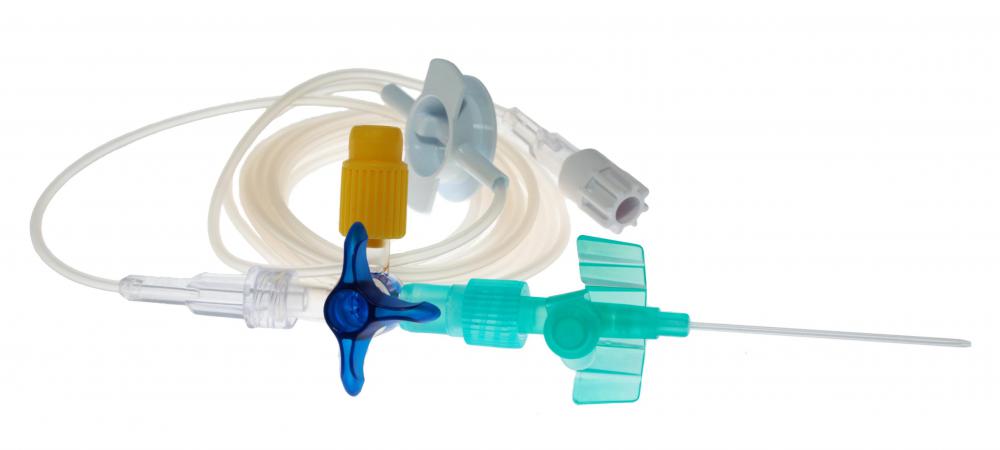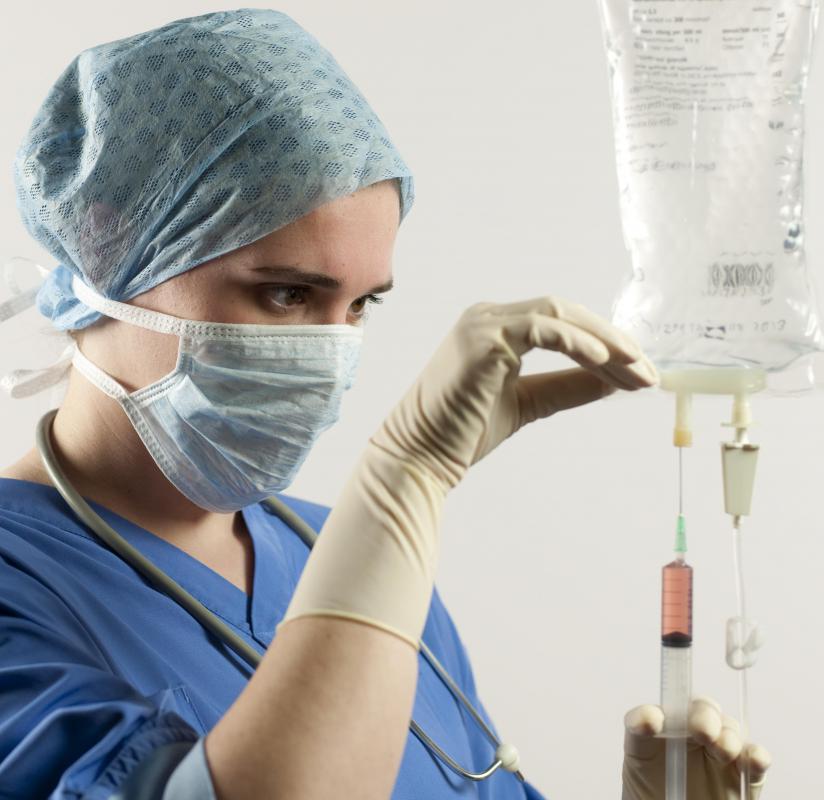At WiseGEEK, we're committed to delivering accurate, trustworthy information. Our expert-authored content is rigorously fact-checked and sourced from credible authorities. Discover how we uphold the highest standards in providing you with reliable knowledge.
What is an Intravenous Catheter?
An intravenous catheter is a small plastic tube inserted into a patient’s vein. One is usually used to administer continuous medication, fluids, or blood. A catheter is typically part of an intravenous line, or IV, which is often used by doctors to give patients drugs directly into the bloodstream.
Intravenous catheters are inserted using a needle that is then removed. To locate an appropriate vein, into which the catheter can be inserted, a medical professional will typically tie a rubber tourniquet around the area of the body intended to receive it, to temporarily slow blood flow and make veins more distinct. The exterior needle, with the much smaller catheter inside it, is then inserted into the vein. The exterior needle is then removed, and the catheter is held in place with medical tape. The catheter typically connects to a long, thin, plastic tube, which may be attached to various types of IV bags.

When an intravenous catheter is placed in the arms or legs, it is typically referred to as a peripheral IV. When it is placed in veins that constitute the central circulation system, such as the jugular or subclavian vein located in the chest beneath the collar bone, it is referred to as a central IV. Although different, both types of intravenous catheter are inserted in the vein, and are used for basically the same purpose — delivering fluids throughout the body via the circulatory system.

Complications may result from the use of an intravenous catheter. A common side effect is phlebitis, or swelling of the blood vein. This complication is generally not dangerous and may subside quickly, depending on where the catheter was inserted and how long it was in the body. This condition may lead, in turn, to thrombophlebitis, or swelling of the vein with blood clotting. This can occur when the body’s natural defenses cause blood to clot against a foreign body — the catheter. This, too, is usually not serious and does not have the same consequences as other blood clots that can occur in larger, more centrally located veins.

More serious side effects from the use of an intravenous catheter include septic thrombophlebitis and local infection. Septic thrombophlebitis is the infection of the blood vein in which the catheter has been inserted. Local infection occurs when the insertion site becomes an open wound and the upper levels of skin become infected. Both are typically treatable with a standard course of antibiotics, but may, in rare cases, require hospitalization.
AS FEATURED ON:
AS FEATURED ON:













Discuss this Article
Post your comments